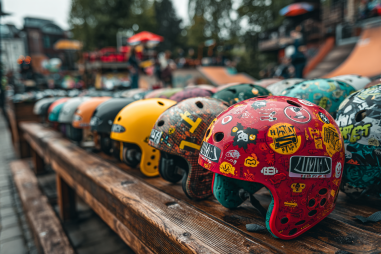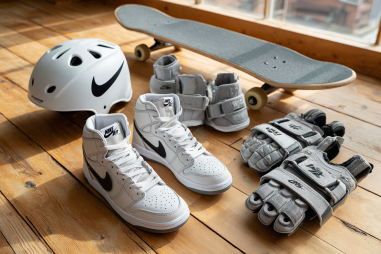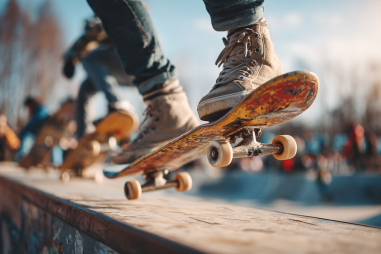Starting skateboarding is an exciting journey, but one of the first hurdles many beginners face is figuring out what gear they actually need. With so much advice floating around online, in skate shops, and from fellow skaters, it’s easy to get overwhelmed or misled. Some people insist you need top-of-the-line decks and wheels, while others say it doesn’t matter at all. This confusion often leads new skaters to spend more money than necessary or choose equipment that doesn’t suit their style or skill level. To help you navigate through the noise, let’s break down some common myths about skateboarding equipment and clarify what really matters when you’re selecting your gear.
Myth 1: Expensive Gear Is Essential to Start Skating
One of the most pervasive misconceptions is that you need to invest in costly, high-end skateboards and accessories to begin skating properly. This can discourage many beginners who don’t want to spend a lot of money upfront or give the impression that skateboarding is only for those willing to splurge. The truth is, while professional-grade equipment can offer slight improvements in performance and durability, it’s absolutely possible—and common—to start with affordable gear.
Many beginner boards and components on the market are designed to be budget-friendly without compromising safety or basic functionality. These setups allow new skaters to practice, learn, and develop their skills before deciding if they want to upgrade. The most important features when starting are that the board is sturdy, the trucks are functional, and the wheels suit your skating environment (like smooth indoor floors or rough outdoor pavement), rather than the price tag. Investing a lot of money too early often leads to buyer’s remorse when skaters realize what their specific preferences or needs are.
Myth 2: Only Certain Brands or Types of Boards Are Good
Brand loyalty runs deep in many sports communities, and skateboarding is no exception. Some people believe only a handful of well-known brands make quality skateboards, which can make newbies feel limited or doubt less-famous options. However, the skateboard market is quite diverse, and many smaller or newer brands produce excellent equipment that is perfectly suitable for beginners.
Additionally, “types” of boards—such as street decks, cruiser boards, or longboards—each have different purposes and designs, but none are inherently better than the others. The best board for you depends on your intended skating style. If you want to learn tricks at a skatepark or on the street, a standard street deck is usually the best choice. If your focus is cruising around town, a cruiser or longboard might suit you better.
Trying out various brands and board types can help you discover what feels right. What matters more than brand prestige is quality control, appropriate board dimensions, and comfort for your particular use.
Myth 3: Equipment Doesn’t Affect Your Skateboarding Experience
It’s sometimes said that skateboarding skill comes down solely to practice, and gear doesn’t really matter. While persistence and technique are undoubtedly crucial, your equipment does influence your overall experience, especially as you progress. Poor-quality boards can hinder your ability to balance, turn, and land tricks, leading to frustration and even injury.
For example, trucks that are too tight or loose can affect turning and carving, wheels that are too hard or too soft may not grip surfaces well, and decks that are the wrong shape or size can make it harder to control your movements. Beginners may not notice these differences immediately, but as coordination improves, equipment differences become more obvious and impactful.
Therefore, choosing gear that matches your skill level, style, and environment helps make skating more enjoyable and safer, enabling you to focus on learning and progressing rather than fighting your equipment.
Understanding Skateboard Components and Their Roles
To make informed decisions about skateboards, it’s helpful to understand the key components and their functions:
- Deck: The flat board you stand on. Decks come in various widths, lengths, shapes, and concave profiles tailored to different skating styles. Narrower decks (7.5″-8″) are common for street skating, while wider decks (8.25″+) offer more stability for ramps and cruising.
- Trucks: Metal T-shaped parts that attach to the deck and hold the wheels. Trucks affect turning and stability; they come in different heights and widths suited to the size of your deck and skating style.
- Wheels: Wheels vary in diameter and hardness. Smaller, harder wheels (50-54mm, duro 99a+) are typical for street skating on smooth surfaces, while larger, softer wheels (55mm+, duro 78a-90a) work better on rough surfaces or for cruising.
- Bearings: Bearings fit inside wheels, allowing them to spin smoothly. Good bearings help your wheels roll easily and maintain speed. Bearings are rated by an “ABEC” scale, but factors like quality lubrication and maintenance also play a big role.
- Grip Tape: A sandpaper-like layer applied to the deck surface to provide traction, ensuring your feet don’t slip off the board.
- Hardware: The nuts, bolts, and screws that hold the trucks to the deck. It’s a small but necessary part of your setup.
Having a basic understanding of these parts can help you customize your skateboard to better fit your preferences and improve your skating experience.
Tips for Selecting Beginner-Friendly Equipment
When choosing your first skateboard gear, keep these points in mind to ensure a smooth start:
- Go for a complete skateboard: For beginners, buying a pre-assembled “complete” skateboard can save time and confusion. These packages are usually designed for entry-level performance and safety.
- Pick the right deck size: A deck width around 7.75″ to 8.0″ is usually versatile and comfortable for most new skaters. Those with smaller feet might prefer slightly narrower decks, while larger feet or balance-focused riders might want wider.
- Match wheels to your terrain: For street skating on smooth pavement, look for wheels in the 52-54mm range with medium to hard durometers. If you skate mostly on rougher surfaces or want a cruiser, choose larger and softer wheels.
- Don’t overlook trucks: Truck width should correspond to your deck width for optimal turning and stability. Most beginner completes come with matched sets, simplifying this choice.
- Invest in safety gear: Although not part of the board, helmets, wrist guards, and pads are vital for beginners to avoid injuries and build confidence.
- Test if possible: Visit a skate shop to try standing on different boards or attend local skate spots to talk with skaters about setups they recommend.
Remember, skateboarding is about having fun and expressing yourself. Your equipment should support your goals and style without overwhelming you with unnecessary complexity or cost.
Finding Gear That Fits Your Level and Style
The best skateboard gear isn’t necessarily the most expensive or the most popular—it’s the setup that fits your personal needs and helps you enjoy skating more. As you start, focus on comfort, safety, and adaptability. Later, as your skills evolve, you can explore upgrading specific components such as trucks for better turning precision or wheels for different riding surfaces.
Don’t let myths about equipment steer your choices. Instead, seek advice from experienced skaters, try out different options, and think critically about what works for your body size, skating environment, and personal tastes. This way, your gear becomes a true partner on your skating journey rather than a barrier.







